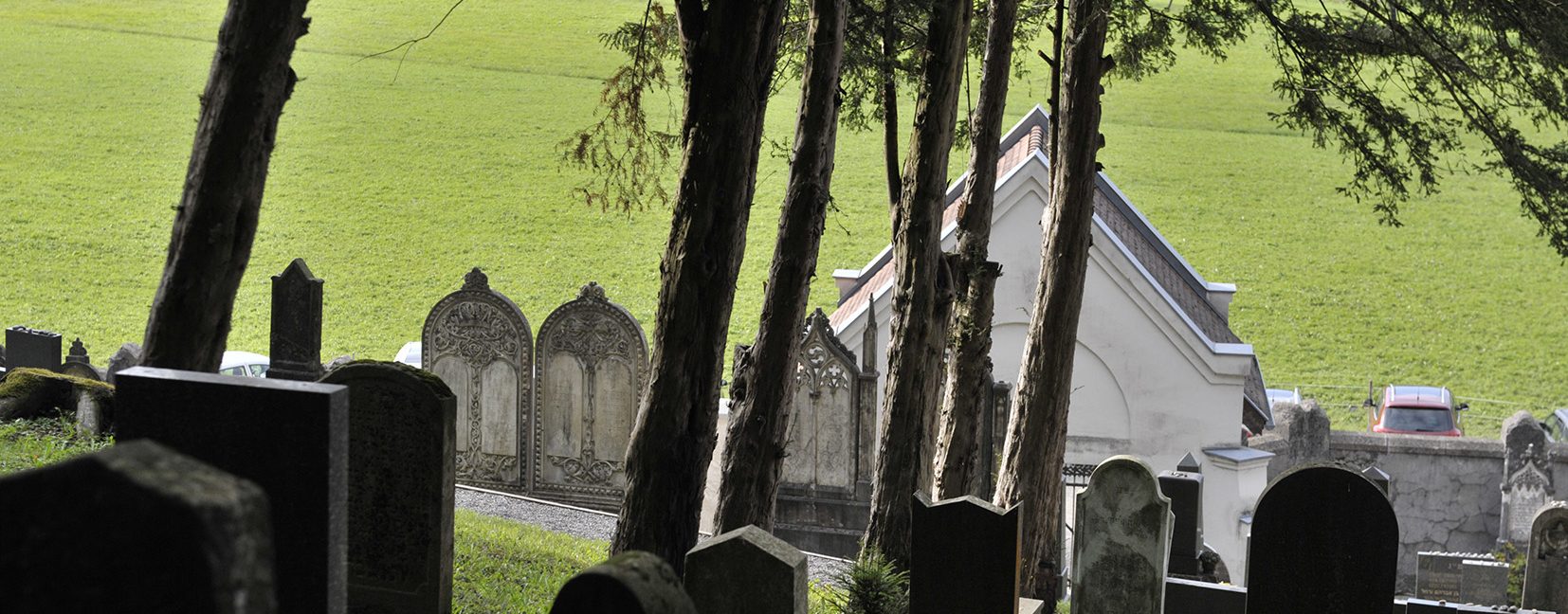Sound Installation in the Jewish Cemetery Hohenems
Susan Philipsz – Night and Fog is an exhibition of Kunsthaus Bregenz at two venues, in collaboration with the Jewish Museum Hohenems.
„Inspired by the natural atmosphere of the location I would like to extend my project to explore the history of the region. At Kunsthaus Bregenz I would like to explore disappearance, obscurity and absence, merging the atmospherics of the site with a deeper historical perspective.“ Susan Philipsz
Scottish born Susan Philipsz is one of today’s leading artists. Questions of memory, trauma, and mourning she has increasingly confronted recently, such as at the Solomon R. Guggenheim Museum in New York, and in Kassel for the Documenta 13. For her new series of works War Damaged Musical Instruments, 2015, she has been employing instruments torn by the violence of war. The point of departure for her current project for Kunsthaus Bregenz and the Jewish Museum of Hohenems is Peter Zumthor’s architecture, an illuminated structure, together with the lake and the fog that is typical of the town. And it creates a correspondence to the Jewish cemetery in Hohenems whose landscape of memory is raising from the plain like a scuplture of stairs.
Fog as a metaphor was also the source of the title for the 1955 French documentary Night and Fog by Alain Resnais reconstructing the deportations to Auschwitz and Majdanek. Philipsz has deconstructed Hanns Eisler’s soundtrack for the film into the individual voices of the instruments. Isolated and removed from the overall composition, their timbres fill the seemingly archaic spaces of the Kunsthaus with an almost sculptural presence.
Philipsz is creating a second sound installation at the Jewish Cemetery in Hohenems, in collaboration with the Jewish Museum there, which can be experienced concurrently to the exhibition at KUB.
The Jewish Cemetery in Hohenems for 400 years serves as a place of life and memory. In 1938 the ashes of Louis Weil, who was killed in Dachau, were buried here (or rather the ashes of anonymous concentration camp inmates that regularly was sent by the Nazis to the families of victims). That was the last burial before the war and the Holocaust, when the last eight members of the community who still lived in Hohehems where deported and killed. Today the cemetery is still well kept and active, run by an association of descendants of the Hohenems Jewish community.
Susan Philipsz was born 1965 in Glasgow. In 2000 she was awarded a residency in the P.S.1 studio program, and in 2001 she participated in the Kunst-Werke e.V. artists’ residency program in Berlin, the city she has lived in since. Her work revolves around a melancholic existentialism and explorations of the human voice. She became well-known through a capella renditions of songs. For the Glasgow International Festival she developed Lowlands, after a ballad from the 16th century, which was later recreated at Tate Britain in London, where it won her the prestigious Turner Prize (2010). Her recent solo exhibitions include War Damaged Musical Instruments, Duveen Galleries, Tate Britain, London (2015/2016); Follow Me, various locations in Genova, Museo de Arte Contemporana Villa Croce, Genova (2015); War Damaged Musical Instruments (Pair),Theseustempel, Kunsthistorisches Museum, Vienna (2015); The Distant Sound, various venues, Denmark, Sweden, Norway (2014); Part File Score, Hamburger Bahnhof, Berlin (2014); It Means Nothing To Me, Mizuma Gallery, Beijing, (2012); Seven Tears, Ludwig Forum für internationale Kunst, Aachen (2011); You Are Not Alone, Haus des Rundfunks, Berlin (2011); We Shall Be All, MCA Chicago (2011).
Photos: Rudolf Sagmeister, 2015


